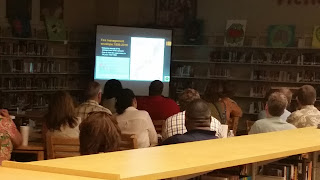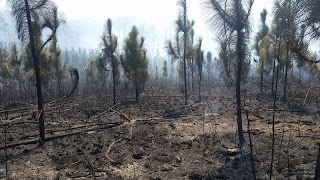As a side note to the previous post: The rain has finally come and some places in the county are seeing signs of Southern Pine Beetles from the stress on the trees from the drought but we are seeing the soil moisture starting to come back.
I wanted to share a picture of a stand of 22 year old loblolly pines that had a prescribed fire under them this last spring, about March 22. This is later than I like to burn but it was the best time we had with the weather like it had been up to this point. Below is the results of this late burn which got hot, a little hotter than I like.
Because it was later and the fire was hotter, it killed the lower limbs on the trees. This was a bonus to the prescribed fire because it took out much of the under-story and it also served as a natural pruning of the trees which will add to the value of the wood at a later date. The pruning was an unintended consequence with valuable results. It will be interesting to watch this stand and see what the trees will look like in the next five to ten years.






















